Hemidactylus frenatus
—
Common House Gecko
Also known as:
Asian House Gecko, Spiny-tailed House Gecko, Chichak
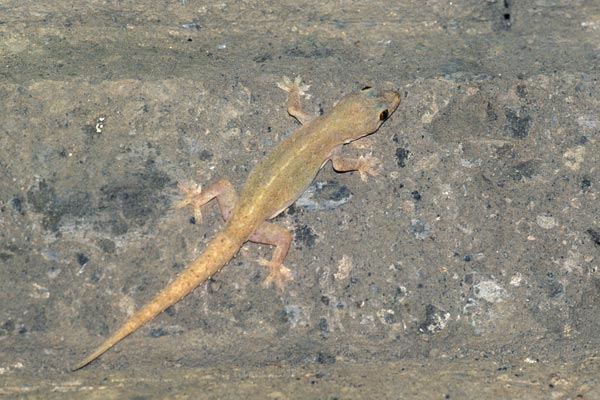
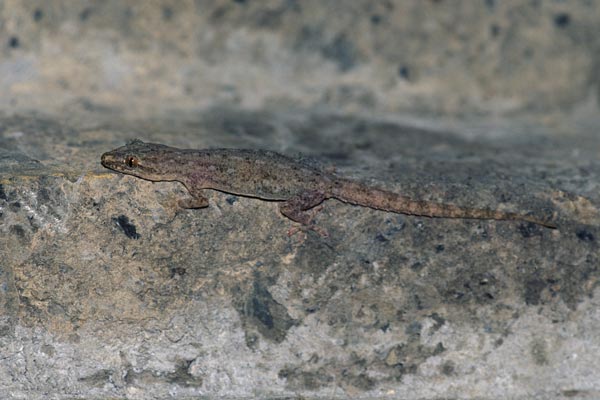
These little geckos abound in Bali and throughout southeast Asia. They're called "Chichak" locally for the sound of their calls. They would sometimes wake us up at night by calling right above our bed. Their color is quite variable, changing based on temperature and background. These two were both on stone gates at Puri Kamandalu at night.

Like most geckos, they're mostly nocturnal, but they're also often seen during overcast days. This one was hanging out on a hotel wall during the day. Its tail has been regenerated and the second-generation one isn't spiny.
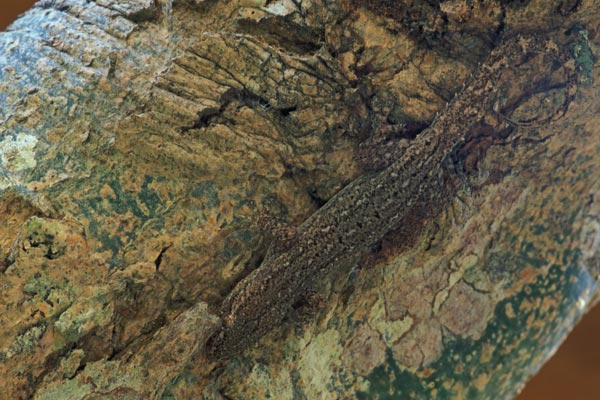

Here are a couple more from a different part of Bali. The one on the tree is showing off some impressive camouflage. Its tail is curled around but is difficult to distinguish from the branch.
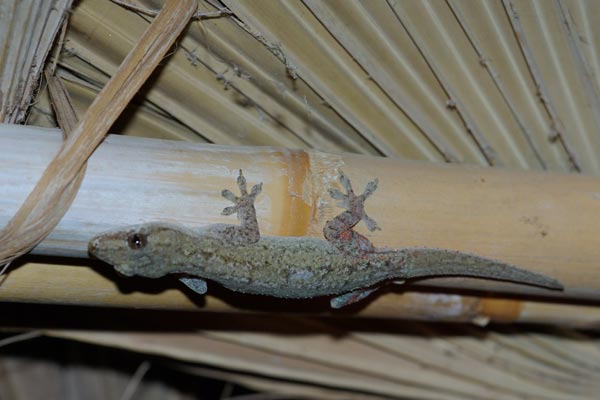
This is one of the two cosmopolitan species of Hemidactylus geckos found in Madagascar along with much of the rest of the tropical world. The other is Hemidactylus mabouia, which we had seen earlier in Maroantsetra.
This gecko had regenerated its tail, and had a number of red mites around its back legs, but otherwise seemed fat and happy.
Here is a list of all the reptiles and frogs I saw on this 2007 trip to Madagascar.
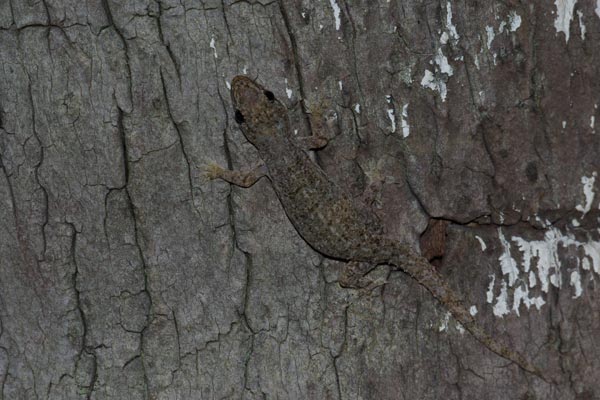
I was setting up my camera to photograph this gecko at the base of a palm tree when a woman with a drink in her hand came stumbling my way trying to see what I was aiming at. She leaned way over between my tripod and the palm tree to get a good look, which of course scared the little gecko away, and I got no more photos. Oh well, not the most exciting species anyway.
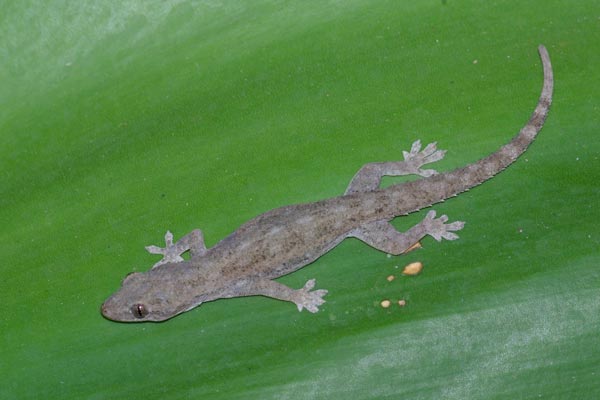
I found this small gecko sleeping in the broad leaves of a small palm along the edge of Anjajavy's garden pond.
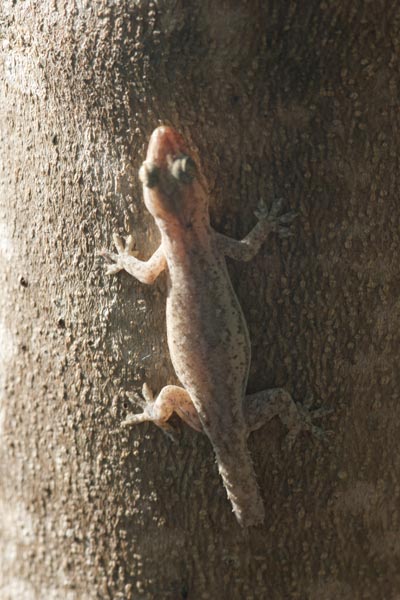
Gagudju Crocodile Lodge, Jabiru, Kakadu National Park, Northern Territory, Australia—November 14, 2009
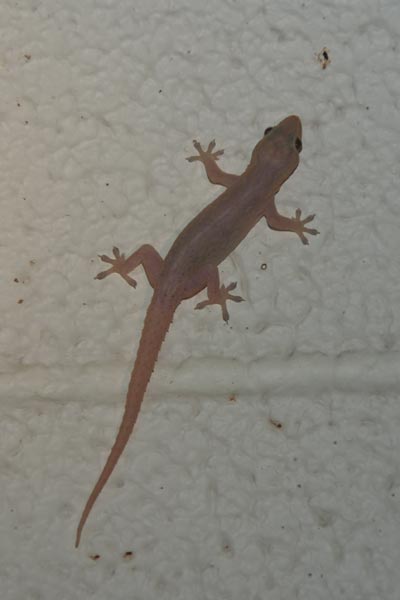
Most of the Hemidactylus frenatus that have become established in Australia hang out on buildings. Here’s one on the side of a wonderfully crocodile-shaped Holiday Inn.

A few days later, I had begun to lose all interest in these omnipresent non-native drab geckos. When this one put in an appearance at the outdoor dining area of the Cooinda lodge, I couldn’t be bothered to get out my real camera, so I took a macro shot from an inch or two away with a little bitty camera, resulting in that oh-so-desirable fish eye effect.

I believe this is the least interesting herp in Costa Rica. However, it's a little bit fun to see it in more and more countries. And little baby ones are cute.
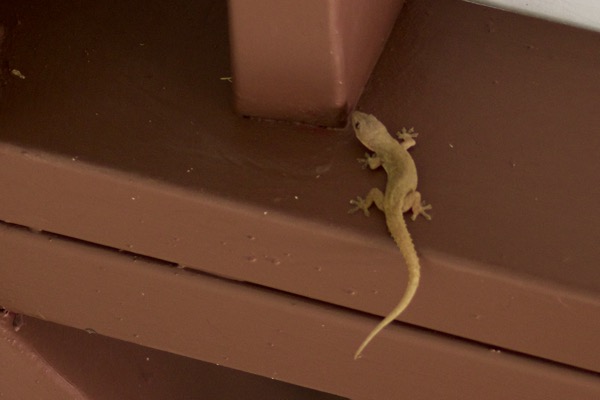
While our party was waiting to register at the Hotel Campestre, we admired a couple of fat geckos up on the ceiling. They appeared to me to be Hemidactylus frenatus, but a couple of years earlier I had seen at this same hotel geckos that I thought were Hemidactylus mabouia but which others identified as Lepidodactylus lugubris. So maybe I should not be trusted at identifying the various standard house geckos?
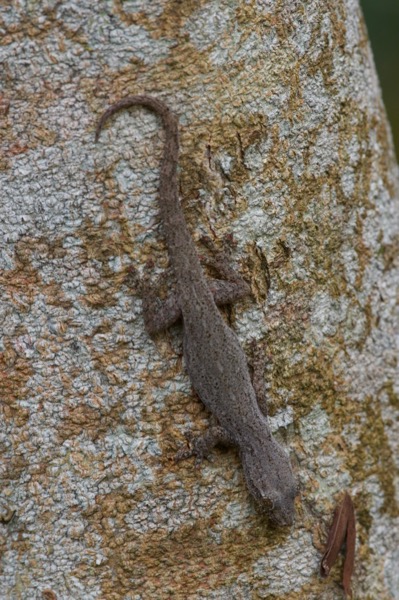
No gecko is more widespread or less interesting than this one. It's superlative in its way.
My Travelogues and Trip Lists page includes a complete list of the herps I saw in the wild on this trip to Malaysia, as well as a travelogue of the trip.
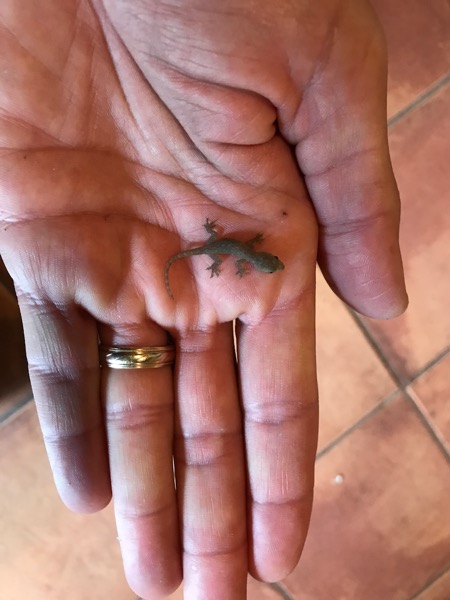
As we packed up on our last morning in Rancho Acosta, this tiny gecko was revealed behind my bag. I chased it around on the floor for a while until I could get it to climb onto my hand. I've seen this species in seven countries so far, and counting.
(After the photo I released it outside of the room, which probably had a higher bug count than inside of the room.)
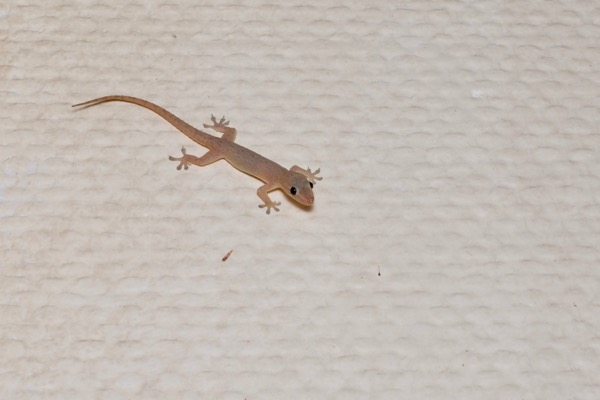
No matter how common and widespread and nondescript these geckos might be, I am always pleased to see them on my travels. At home in coastal California no geckos can be found, and any gecko is definitely better than no gecko. This one was on a curtain in my room.
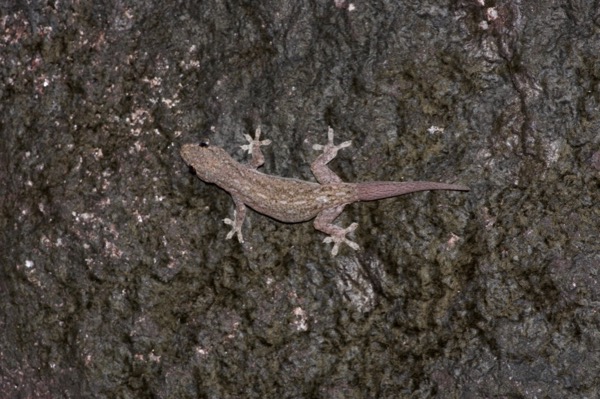
Mostly I see these geckos in or on buildings, or on trees or other plants. This one was thinking outside of the box, perched on a large boulde. Here it was competing with at least two other types of gecko: Spotted House Geckos and Kendall's Rock Geckos.
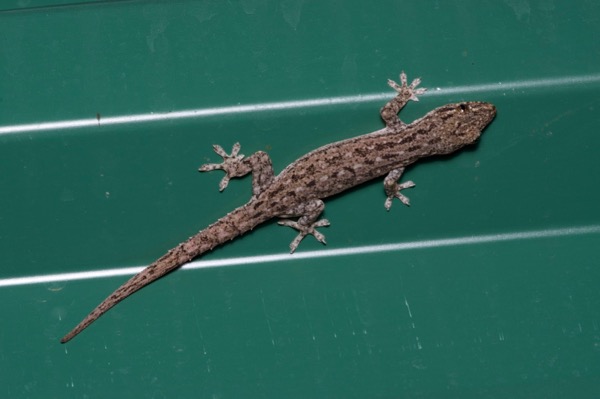
After a nighttime walk in the forest, I could always count on a few geckos on the fencing leading to my room.
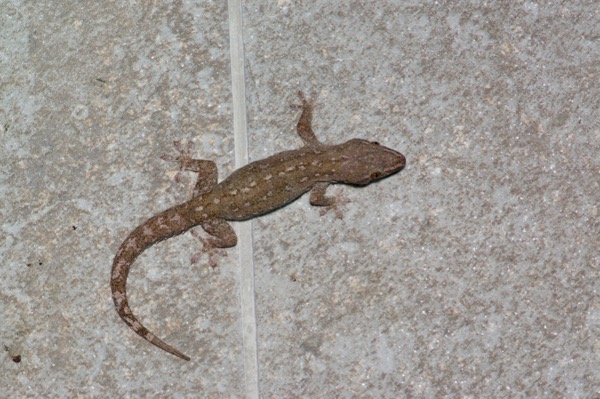
And usually also a few on the walls of my room itself.

Sri Lanka is country number eight in my worldwide search for Hemidactylus frenatus. It's amazing that I haven't photographed any of these in the USA yet.
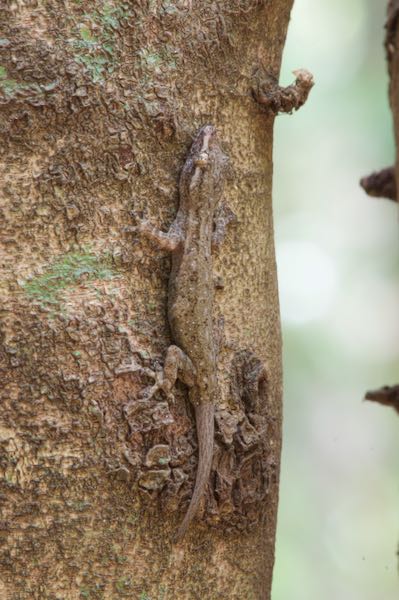
This well-camouflaged individual was out in "plain sight" during the day, unusual for a nocturnal gecko.
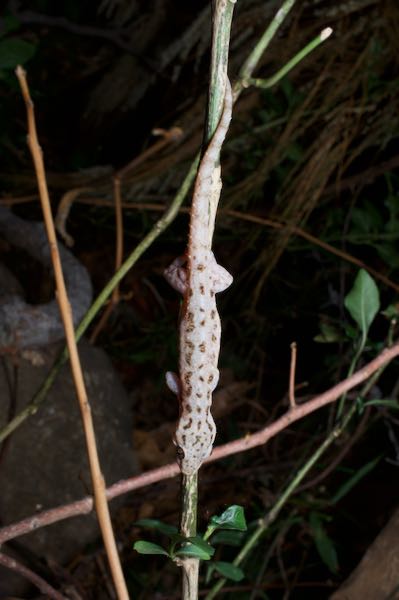
When I spotted this interestingly patterned gecko on a night hike in the highlands, I assumed it was some less ubiquitous type of gecko, perhaps a Cyrtodactylus species. But sadly my guide Udaya Chanaka ID'ed it as another H. frenatus, and gecko experts on iNaturalist agreed.
Printed references:
- Bartlett, R. D., Bartlett, P. B. 1999. A Field Guide to Florida Reptiles and Amphibians
- Cox, M. J., van Dijk, P. P., Nabhitabhata, J., Thirakhupt, K. 1998. A Photographic Guide to Snakes and Other Reptiles of Peninsular Malaysia, Singapore and Thailand
- Das, I. 2010. A Field Guide to the Reptiles of South-east Asia
- Glaw, F., Vences, M. 2007. A Field Guide to the Amphibians and Reptiles of Madagascar, Third Edition
- Leenders, T. 2001. A Guide to Amphibians and Reptiles of Costa Rica
- Manthey, U., Grossmann, W. 1997. Amphibien & Reptilien Südostasiens
- Mckeown, S. 1996. A Field Guide to Reptiles and Amphibians in the Hawaiian Islands
- Rogner, M. 1997. Lizards
- Somaweera, R. 2017. A Naturalist's Guide to the Reptiles & Amphibians of Bali
- Somaweera, R., Somaweera, N. 2009. Lizards of Sri Lanka: A Colour Guide with Field Keys
- de Silva, A., Ukuwela, K. 2017. A Naturalist's Guide to the Reptiles of Sri Lanka